Monday, 22 April 2024
Menu
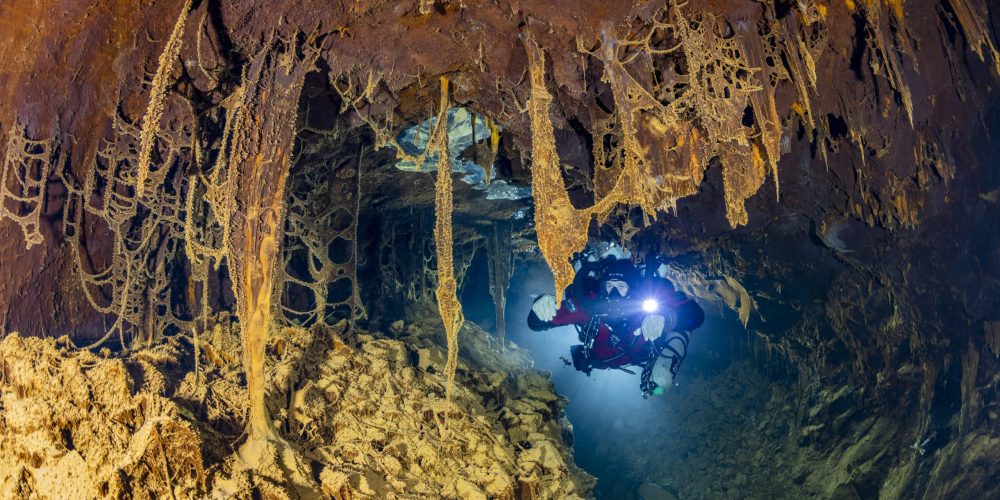
It happened to be in 1845. The lease auction for the Dubník Opal Mine was won by Viennese jeweler Solomon Johann Nepomuk Goldschmidt. Three years later, the revolution broke out in Europe, and Vienna was occupied by the military. Due to agitated circumstances Goldschmidt prudently moved his wealth, consisting mostly of gold and gemstones, to Dubník Mines and hid it somewhere in the Schlamm adits. Shortly after Solomon died knowledge of the exact location of his wealth was buried with him.
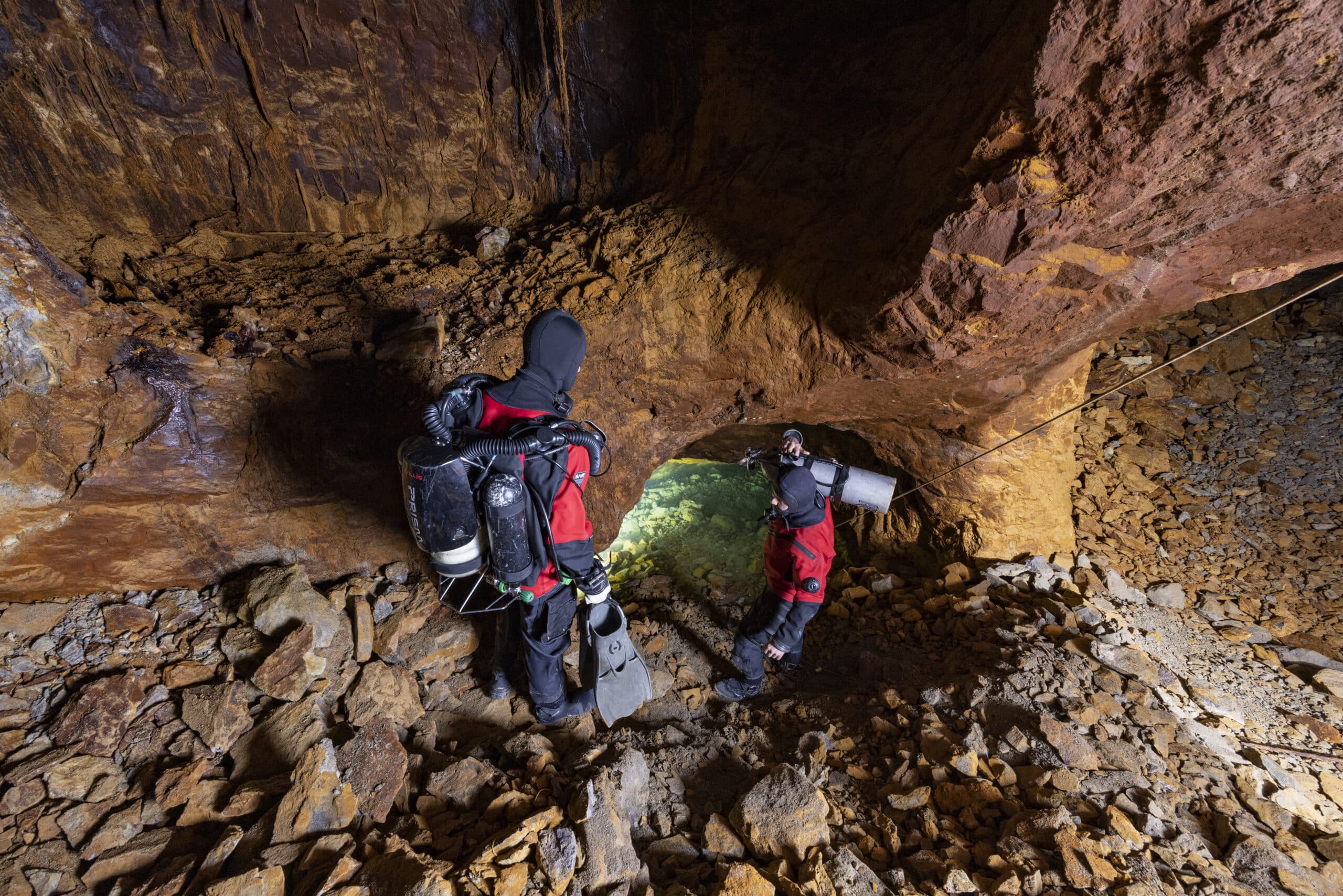
Even though the last mining activities stopped in 1922, the thoughts of treasure have been boggling the minds of obsessed treasure hunters until today. Whereas the dry parts have been searched to the last corner, there are still parts the human foot couldn’t have accessed for more than a century.
Here in Dubnik, the water was the strongest enemy of the miners. At the lower levels of the mine, the fight against it was the order of the day. But after the miners ultimately turned off the pumps in 1922, water flooded more than 5km of lower horizons. Rainwater travels underground and as streams through cracks in the ore, it absorbs mixtures of ferrous minerals. It eventually finds its way inside the tunnels and covers the walls of the adits with this colorful mixture.
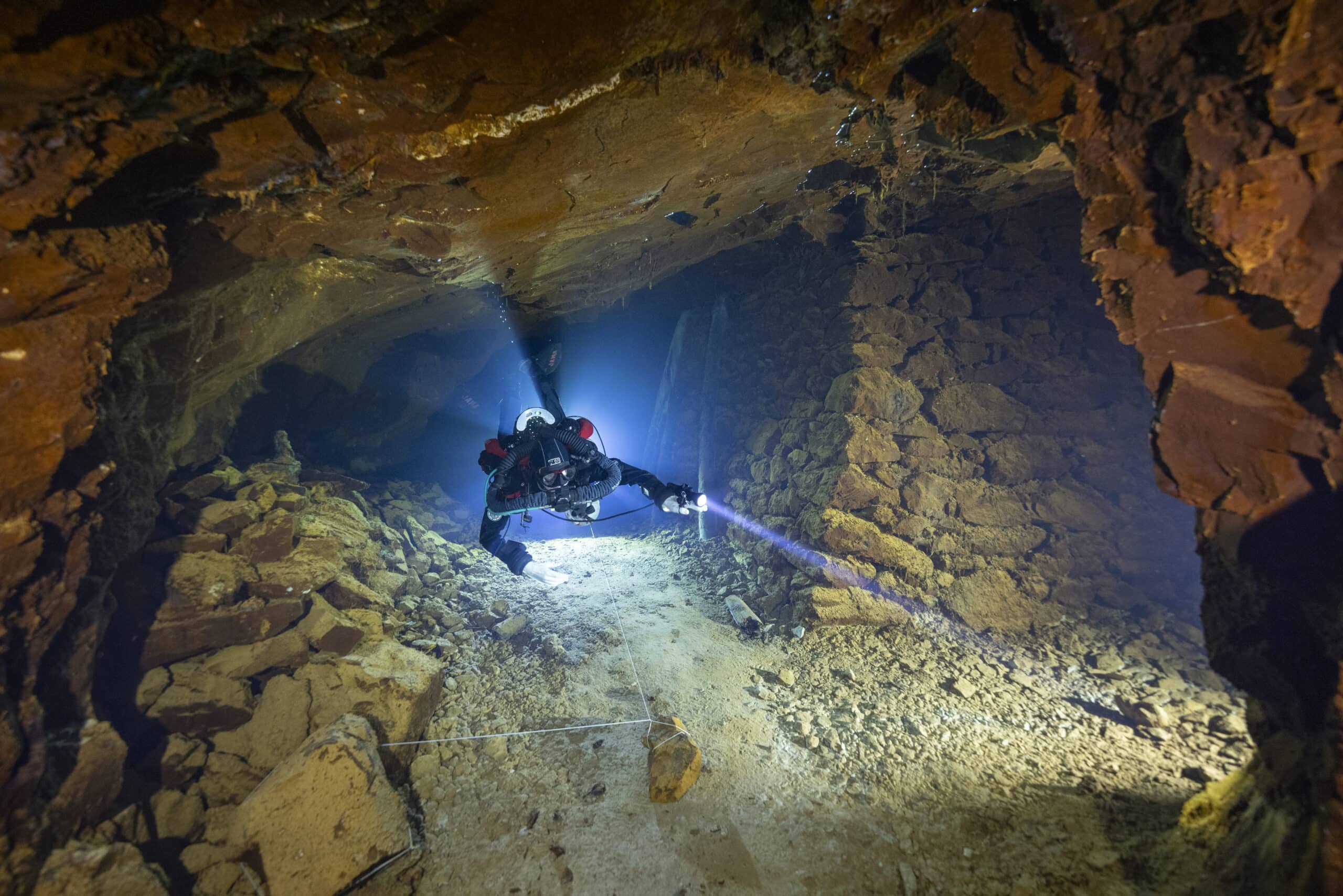
Despite our eyes being overwhelmed by colors our attention is pulled to the story about Schlamm Adit. Hand-carved tunnel, covered in fine light mud, that absent in contemporaneous documents. Its name is derived from the German word Schlamm – mud. The only existing access to it leads through a small pool. There is a reason to believe that the last unexplored spaces may still be somewhere underwater behind this flooded tunnel.
Outside the trees teems in warm autumn colors. The portal Jozef lies on a small meadow beneath a ripe deciduous forest. Kilometres of excavated tunnels lead from dark to the surface and end with a number entrances and downcasts. Some are known and visited occasionally, while the others are forgotten and in the surrounding forest they peacefully exhaust the cold smell of the past. Nowadays Jozef is the only one that is used as a functional entry to the underground.
As we enter the portal, the atmosphere changes dramatically. Behind heavy wooden door, mild air is suddenly replaced by cool breeze. Walking with first heavy load on my back I can’t deny thoughts of getting lost in the dark labyrinth. Hundred years old nicks of mattock are still visible on colorful walls. But I can’t investigate these paintings closely as I try to memorise as much of surroundings as I can in order to find the way back.
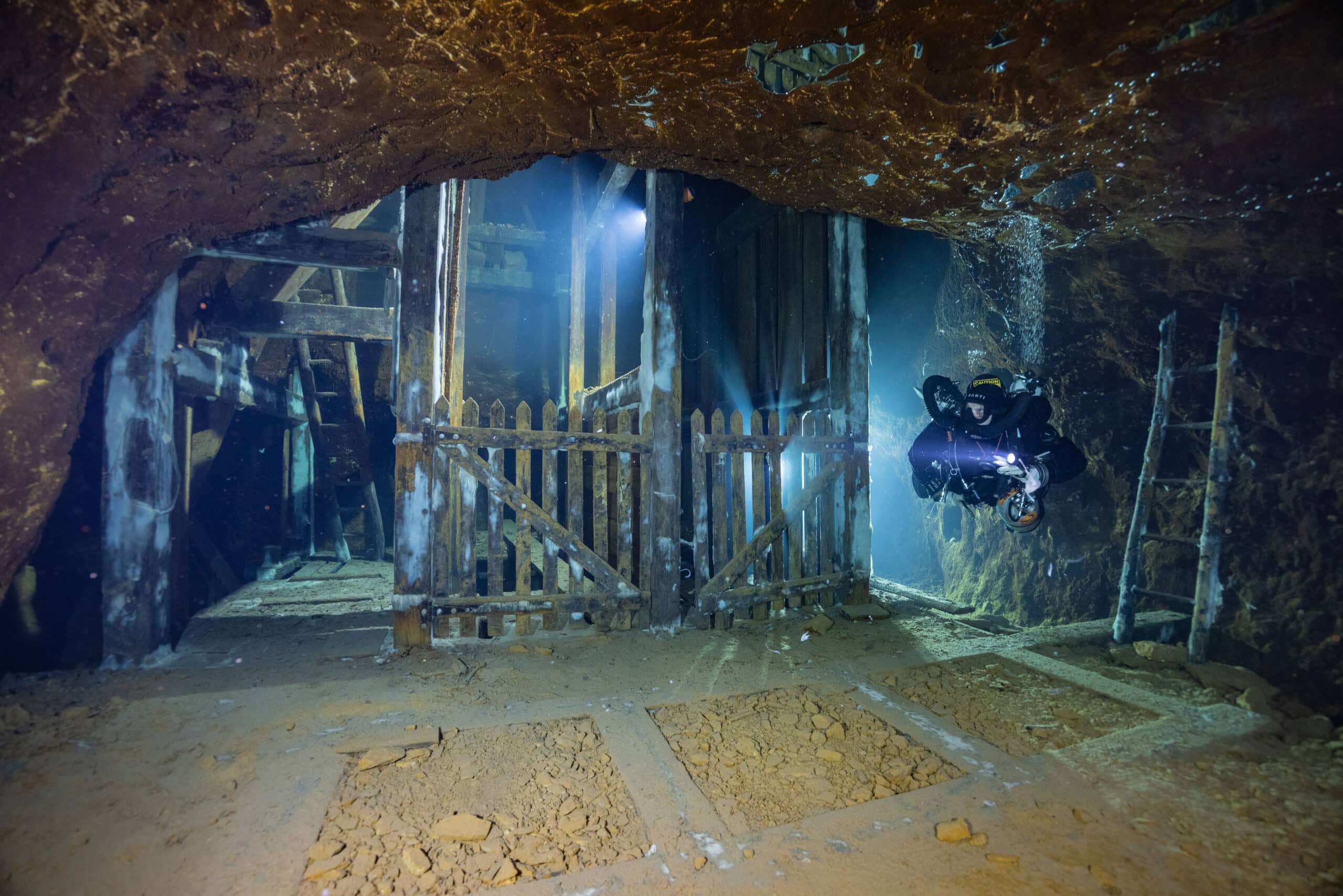
A series of corridors and halls bring us to a decline – a descending shaft connecting multiple horizons. 120 high, hand-carved steps, are covered in a layer of mud, making the descent with heavy gear on our backs, strenuous. Piles of andesite rubble line the staircase on both sides. Remnants of opal nests – tiny opal deposits, are scattered here and there along the walls, further enhancing our imaginings of treasure. Eventually, the sound of dripping water is completely overpowered by rapid breathing and heavy footsteps. The decline disappears in a small pool of crystal-clear water.
We look into the clear pond and wonder if Goldschmidt’s treasure rests somewhere there too. It seems absurd to search for it in a cold labyrinth of flooded adits. Yet the very vision of the treasure tugs us beneath the surface. While we prepare for diving, the water turns murky. The clear pool suddenly becomes a cloud of swirling mud. The vision of treasure overpowers all doubts.
Behind the entrance the view brightens up again. The water is so clear that it seems as if there was none. The shaft seems more colourful than the ones we’ve seen in dry parts. Is it an illusion or a vision? Could it be that the refraction of light reflects more colours? Or is it perhaps our obsession with the treasure that deceives our eyes?
As we descend deeper, the colours on the walls become ever more vibrant. No, these are not deceptive illusions. Truly, the walls play in all colours. Some parts of the adits glow a deep orange and yellow. Others happen to be red, purple, and pink. Unaware of any explanation, we are drawn deeper into the colour-play. Phenomena of various shapes resemble dripstones at one time, needles, spider webs, even lace at another. How could these amazing combinations of shapes and colours have come about? Water is the answer.
These spectacular formations we see underwater have been formed by the decomposition of pyrite and marcasite into limonite or iron hydroxides. The flooded parts are a kind of large reservoir with acidic water (pH 3,2 – 3,8) in which a mild electrolysis takes place. Iron ions are attracted to the walls, which have a negative charge. They gradually cover the walls with a coloured shell and form spectacular formations.

The colourful mineral shell is thus made up of iron hydroxides, which attach to the walls due to their opposite electric charge. Noticeable formations on the walls are a result of the same chemical reaction. Their unique variety of shapes and sizes, however, is due to the flow of water. In places where the water doesn’t move, they grow vertically downwards. In adits with slow moving water, they curl in different directions. The most amazing thing is that here, underwater, changes happen to take place over a period of years or months. The seemingly inanimate underground changes at a rate we normally only see in the living nature.
As the water was slowly flooding the horizons, from some cavities the air did not manage to escape and remained trapped underneath the ceiling for good. The surface of the bubbles reflects the rays of light like a mirror, causing the colours on the walls to shimmer. When the surface of the bubble ripples, the whole colour play gets alive. Perhaps, this amazing colour play may leads us to the treasure.
Limonite decoration is fragile and breaks easily. With just a touch of exhaled bubbles, or even a stronger jet of water caused by the flapping of fins, the delicate limonite falls from the walls like a heavy rain. The labyrinth is as rugged underwater as it is in the dry horizons, but exploration is much slower.
One brightly coloured room succeeds another. Some teem in orange and yellow. Others are painted in vibrant pink and purple. The colour scheme of the walls is determined by the process of mineralization and presence of various metal elements. Gravity allows rust ceiling stalactites to form, reaching several tens of centimetres in length. In some parts the decoration looks just as rich as in limestone caves. These limonite structures are fragile and collapse easily just from touch with exhaled bubbles, which often disturb sediment and lowers the visibility. Therefor we do not let the guiding line out of the hand.
When the eyes get used to the enchanting colours and bizarre decorations, history takes over. Long staircases. Wooden ladders covered in thick white mould. Forgotten hammers and mattocks. Heaps of rubble covered by orange dust. Wordless corridors telling a story which man ceased writing over a century ago.
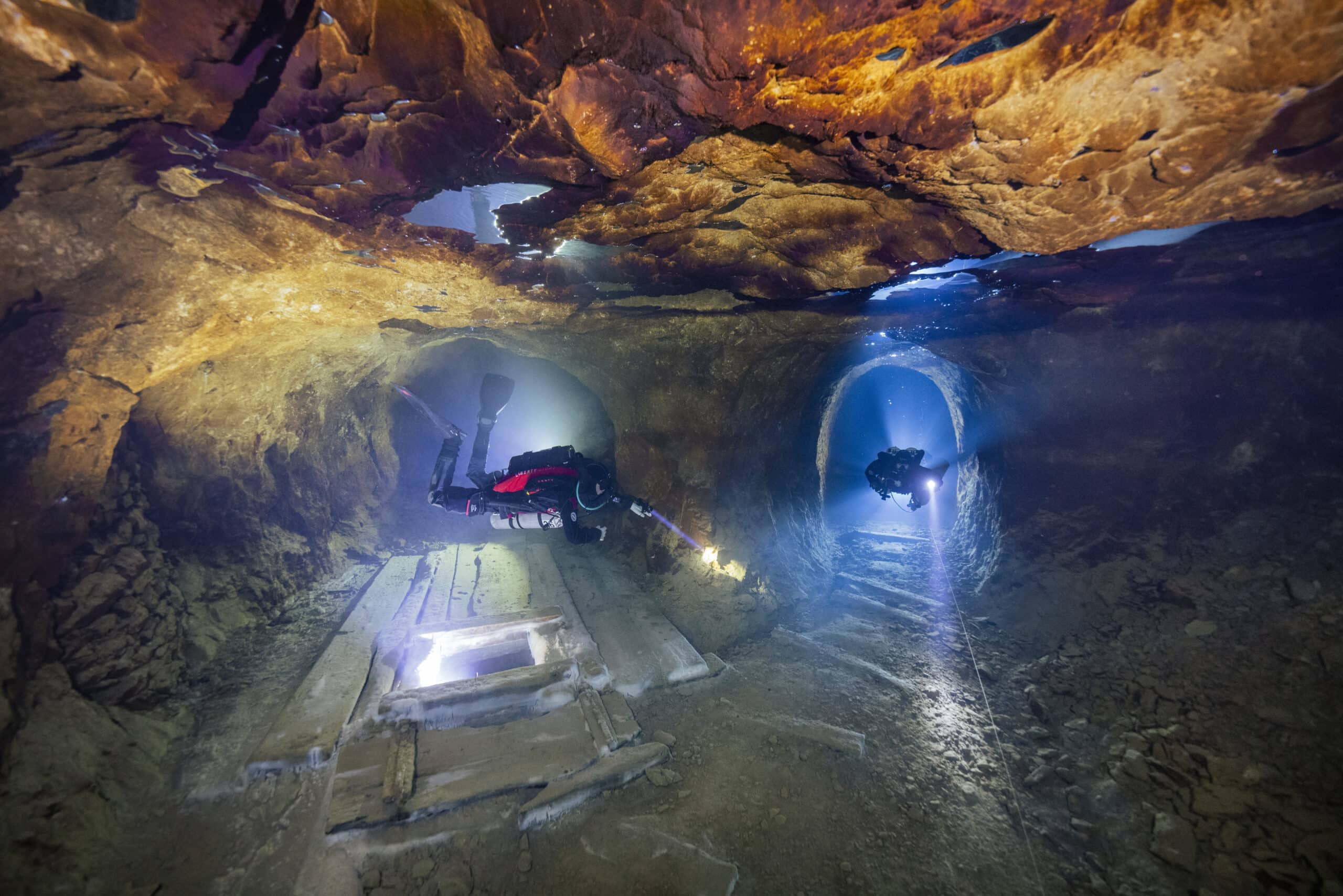
Hundreds of metres from the flooded entry, tens of metres below the water level, the adits branch off into corridors that are not plotted on the map. Both shapes and colours of decoration have changed. Long limonite formations hang from the ceiling like bars guarding the entry to secret adits. Is this the place we are looking for? The adit indeed hides an extraordinary phenomenon. The ceiling at its end is covered with white dripstones, to which thin strands of iron oxide attach from below. Since even the slightest movement of the water breaks the fragile structures and swirls the orange sludge we don’t let the guiding line out of our hands.
The Fedö Shaft interconnects all the horizons below the level of the Jozef Adit with the surface and is the only gateway to the two deepest levels of the mine. Looking underneath, we focus on the accurate descent across the hauling section. As we exit the shaft at a depth of 50 metres, we think of the miners of the past who used to work in the horizon 50. Here, deep underground and underwater, the mine shows us yet another of its spectacular faces.
Whereas walls in some tunnels are still covered in thick limonite shell, in others they remain clean, composed of pure andesite. The volume of opal deposit gradually weakened and the concentration of minerals in the rock also decreased with it.
But what interests us most is the treasure. It must be within the reach. In a heap of rocks, we find pieces of precious opal. It was obviously a heap prepared for transport, but when the water flooded the horizon, it buried the precious stones along. In the light beam of diver’s torch we admire the unique play of colours of precious opal. Does this mythical colour-play really capture the minds of all who view it? Well, it did many times in the past.
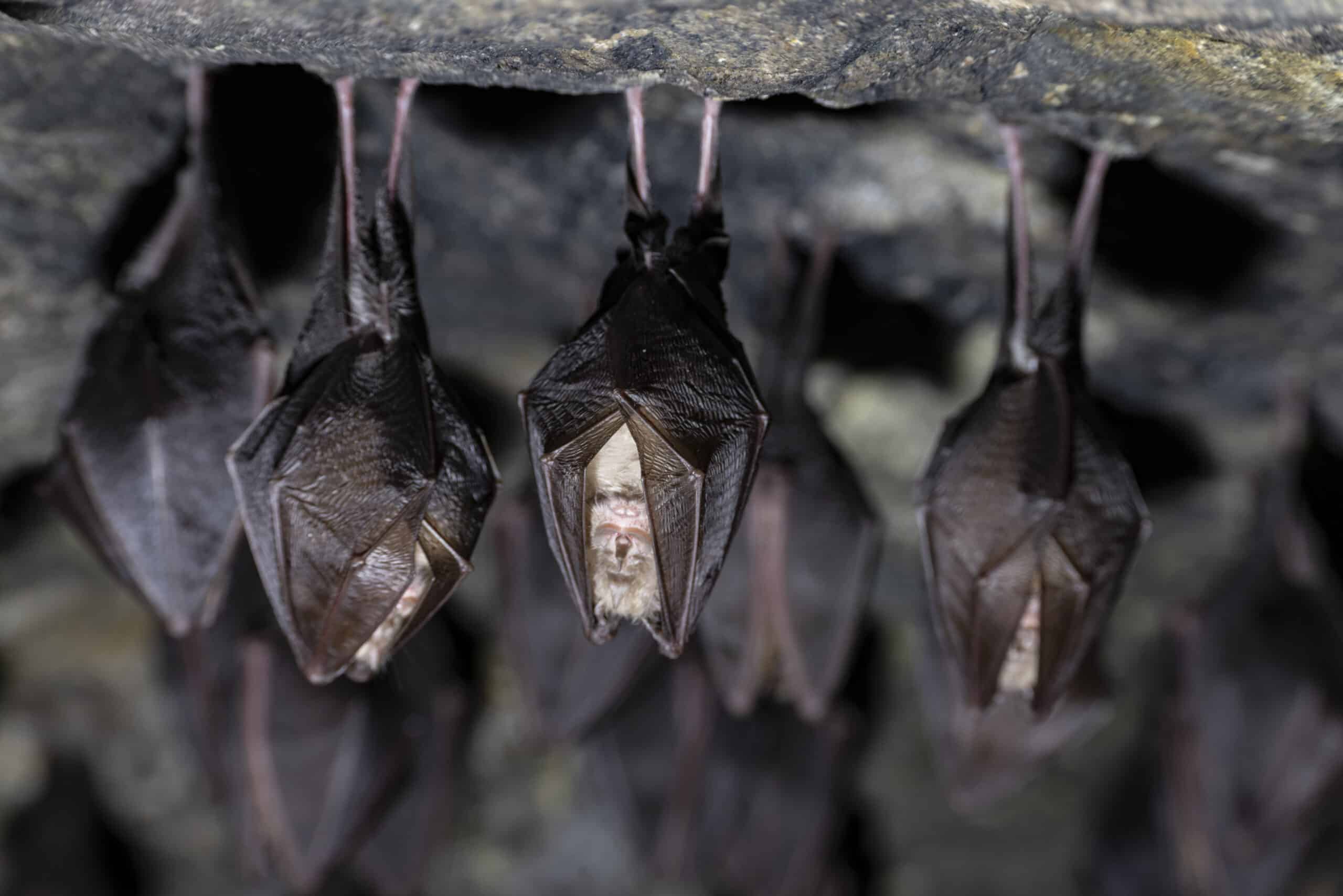
An important description of opal is that of Caius Plinius Secundus, better known as Pliny the Elder, a Roman author, naturalist and naval commander who lived in first century A.D. In his work Historae Naturalis Libri XXXVII he wrote:
Made up of the glories of the most precious gems, to describe them is a matter of inexpressible difficulty. For there is amongst them the gentler fire of the ruby, there is the rich purple of the amethyst, there is the sea-green of the emerald, and all shining together in an indescribable union.
The Roman senator Nonius was so obsessed with the beauty of his opal ring that he chose living in exile rather than giving up his precious in favour of emperor Marc Anthony. Napoleon Bonaparte brought a large, 700 carat heavy, black opal named ‘Burning of Troy’ as a gift to Empress Joséphine Beauharnais.
The cold and the image of the long way back to the surface return us to reality. We ascend. As we emerge from the shaft at horizon 38, we understand the true magic of this place. It’s not a chest full of gems that would bring us fortune and fame. It is the unrepeatable combination of man’s and nature’s work that is the most precious treasure. These adits are the oldest as well as the largest opal mine in the world. What’s more, the water down here has embellished the centuries-old history of human labour with a unique decoration.
Opal mine gallery by Martin Strmiska want to dive the opal mine visit the web page and book in the adventure.




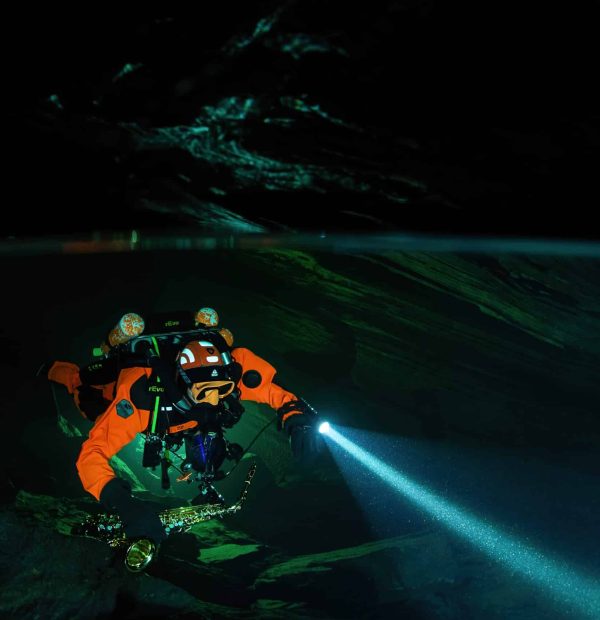



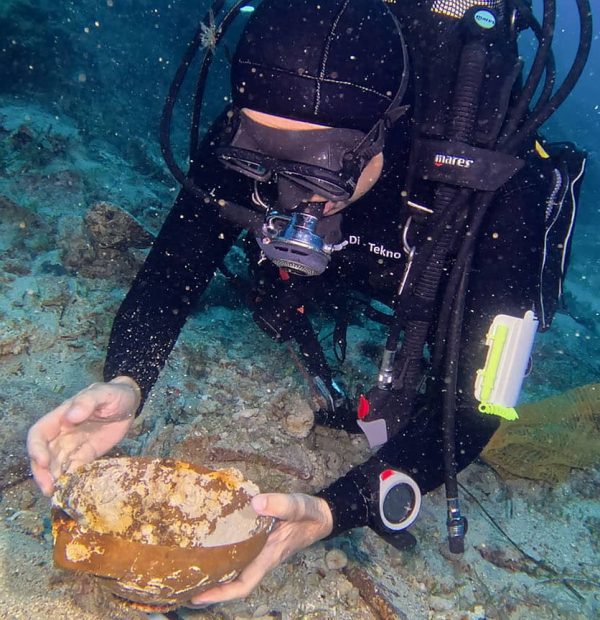

Welcome to DIVERS24.COM, your daily source of scuba news, freediving, scuba diving information, and equipment reviews. Our comprehensive coverage of the dive industry from A to Z provides you with all the latest scuba news, training updates, underwater photography tips, and everything else related to scuba diving. Whether you’re a beginner or an experienced diver looking for more knowledge about scuba gear or techniques – we’ve got it covered! With our in-depth articles written by experienced divers who have been there and done that, you are sure to find exactly what you need here at Divers24.com. Dive into scuba news today!
Underwater Media Sp. z o.o.
Szafarnia 11/F8,
80-755 Gdansk, Poland
Welcome to DIVERS24.COM, your daily source of scuba news, freediving, and scuba diving information. Sign in for a weekly news update and discount coupons for dive gear and apparel.
@2023 - underwatermedia.pl. All Right Reserved. Designed and Developed by Tworzenie stron internetowych Gdansk

The Divers24 portal is currently the largest online medium treating diving in Poland. Since 2010 we have been providing interesting and important information from Poland and around the world on all forms of diving and related activities.
Contact us: info@divers24.com